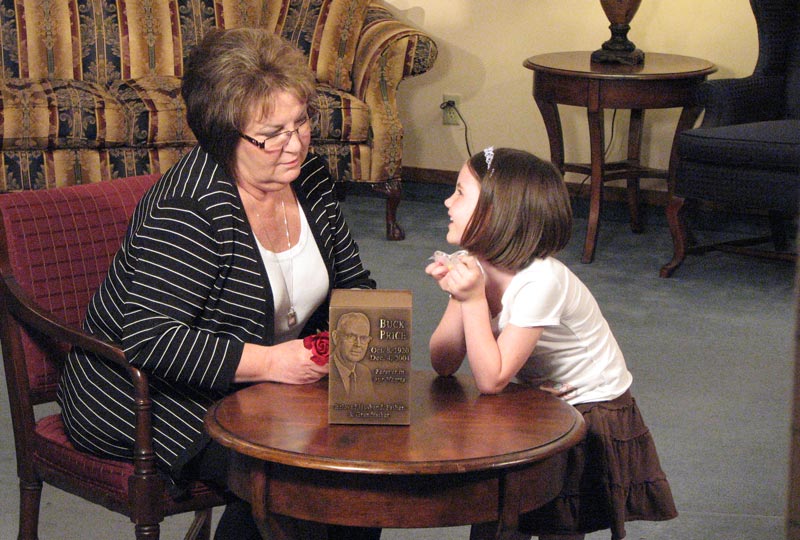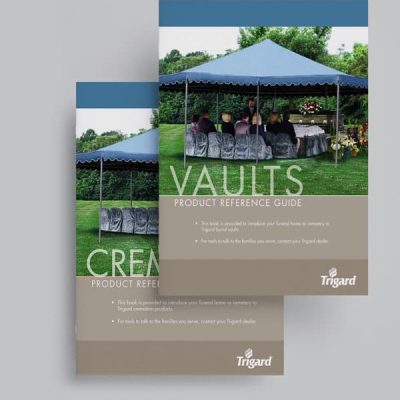My family owns 7 funeral homes, 2 cemeteries, and 2 manufacturing companies that make products for the funeral industry.
My Aunt, Linda Darby, always jokes and says when someone asks her what she does for a living, there are two types of people and responses:
Type 1: those that end the conversation right then and there, and Type 2: those that ask really great questions and extend the conversation throughout an entire plane flight. If you’re reading this post, you probably fall into the latter category, and we love that.
There is a stigma that our industry pulls the curtain shut when it comes to the details of what we do. It is true that we tend to shy away from broadcasting everything we do, and that’s because those specifics aren’t for everyone (See Type 1).

For me, this industry is a way of life. Some of my earliest childhood memories include running around the funeral home after hours, or riding in the car with my father as he ran into our crematory to check to see if a cremation was complete. My three year old daughter loves exploring our underground mausoleum and visiting our greenhouse where we grow the cemetery’s flowers.
While this may seem “taboo” to some, this is our normal, and we have a passion for this industry that may be difficult to comprehend, but if you sit down with anyone in our industry, they likely share that devotion.
Most of us also love talking about what we do, and given the opportunity, we are willing to share as much or as little as you would like to know. To come up with these “little-known facts” about funerals, I had to brainstorm with a few of my team members to see what people are usually surprised to find out. Here’s what we came up with:
1. You can be an organ, bone, and tissue donor but still have a full visitation and viewing.
Do you know if you’re an organ donor? If not, pull out your driver’s license, and somewhere on there, it will say whether you are a donor or not. If you are a donor, when you pass away, your healthy organs will be removed, and someone else can use them.
They are not wasteful when it comes to donors, and they will use anything they can that can help improve someone else’s quality of life. However, your face will always be left intact, allowing for a full visitation and open-casket viewing.

2. We receive calls all the time from someone who has found cremated remains and doesn’t know what to do with them.
From urns being accidentally purchased in rummage sales, to remains being found in attics of newly purchased homes, this is a sad reality we deal with far too often. We always encourage cremation families to have a long term plan for remains.
While it may be clear at the present moment who will care for those remains, most people cannot say what that care plan will look like 100 or even 50 years from now. We usually recommend having a permanent resting place in a cemetery.
3. Caskets can be rented.
We think visitations and viewings are an incredibly important part of the grieving process because they help families get the closure they need. This is possible even if they choose cremation. One option most families don’t know exists is renting a casket from the funeral home just for the services. After the services have taken place, loved ones’ remains can be placed in a sturdy, cardboard container to be cremated.
4. Cremated remains can be separated so that everyone in the family can keep their loved one close.
As the cremation rate in the United States rises, the options for cremated remains keepsakes have also increased. You have the option to bury remains in a cemetery or place them in a niche while also taking a portion home with you in the form of a keepsake.
Urns, jewelry, sculptures, and paintings are all ways to keep loved ones close while also keeping a permanent resting place. Other unique options for resting places for cremated remains include sending them into space, placing them in a coral reef, or even mixing them with soil to provide nutrition for a growing tree.

5. Most cemeteries require some sort of sturdy protection for urns or caskets.
Concrete Burial Vaults and Urn Vaults are required by most cemeteries in order to protect the weaker materials that caskets and urns are usually made of. Without this protection, the urns and caskets would collapse with the weight of the earth making the cemetery ground uneven and unsafe for visitors.
6. Some funeral directors live in the funeral home.
This doesn’t happen quite as often as it used to, but in many funeral homes across the United States, there are apartments attached to the funeral home that a funeral director can stay in. Being a funeral director is a 24/7, 365 day a year job, so living where you work can make things much more convenient.
The funeral industry is complex and fascinating. It is also an industry that is evolving quickly as consumer demands are changing. We learn something new about our industry every day, and I hope you learned something new today.
If you have any questions about the industry, please feel free to put them in the comments below, and I’ll do my best to answer!







